Scylla And Charybdis – Legendary Greek Sea Monsters – Choosing The Lesser Of Two Evils
A. Sutherland - AncientPages.com - Ancient Greek mythology included gods, beautiful goddesses, gorgeous nymphs, and monsters. Legends and myths about these monsters accompanied seamen and other travelers, making their journeys even more hazardous.
At the shores of the lake of Lerna in the Argolid sowed the fear of Hydra, a sea serpent monster, which in place of each severed head, grew two new ones only. Hercules managed to exterminate it.
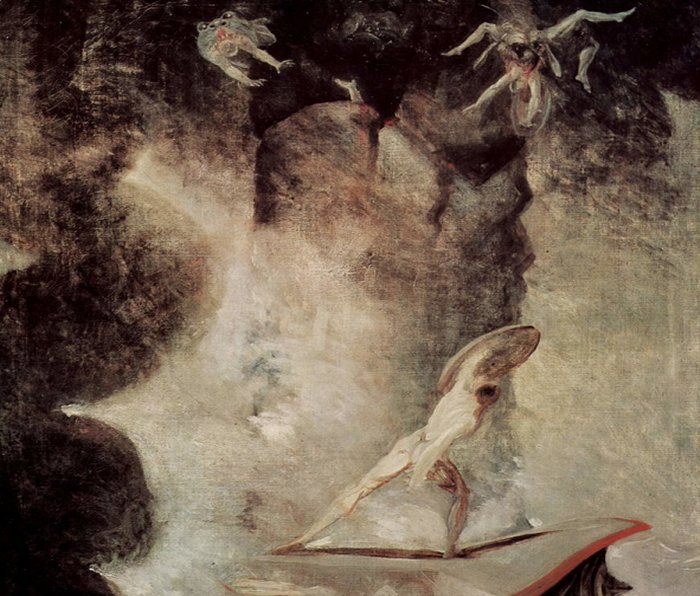 Odysseus in front of Scylla and Charybdis. source
Odysseus in front of Scylla and Charybdis. source
Among other terrible creatures were 'stymphalian birds,' terrible maidens with birds' feet, beaks, and wings of iron. While shape-shifting into sirens, they lured people into the swamps. Their droppings were poisonous, and sharp iron feathers could quickly kill and wound people and herds whenever they wished.
Natural phenomena were not understood by ancient people, who often interpreted events as the work of supernatural forces.
Two immortal monsters - Scylla and Charybdis - lived in the Strait of Messina's narrow waters, a passage between Sicily and the Italian peninsula, and tormented seamen and other travelers from the passing by ships.
The two appear in Homer's Odyssey, and Charybdis is the personification of the sea vortex. She is depicted as a sea deity who dwells in a strait under a rock within a short distance from Scylla's rocky home. In Greek mythology, both were considered navigational hazards close to each other, so they posed a serious threat to passing sailors.
Before she became a monster, Charybdis - a daughter of Zeus and Gaia - was famous for her greed and excess eating. As punishment, she was struck down by thunder into the sea by her father Zeus, and there, she transformed into a monster absorbing and then spitting out masses of seawater along with ships.
The monster was cruel by creating a deadly vortex that entrapped the ships. Most sailors, however, knew how to avoid Charybdis' whirlpool at all costs. The too-close approach could only result in destruction and tragedy.
Charybdis created a terrible vortex that entrapped the ships, and few could escape the furious Charybdis. Three times a day, the whirlpool sucked in everything in the waters surrounding it. Then three times a day, the vortex spewed out vast amounts of seawater and objects it had consumed earlier.
Odysseus once eluded her, slipping between her fury and Scylla, the other monster lurking opposite. However, the beast caught him on the way back. By holding to a fig tree branch growing on a rock protruding from the sea, Odysseus managed to save his life, but it was not easy.
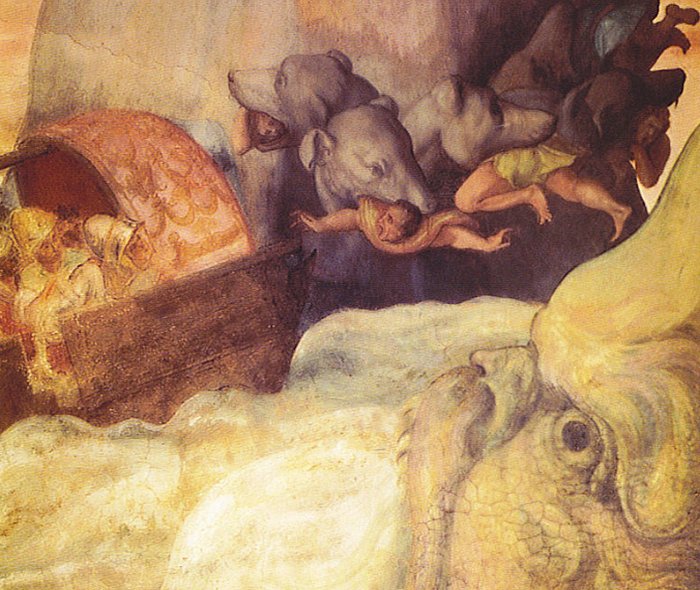 Painting of Odysseus's boat passing between the six-headed monster Scylla and the whirlpool Charybdis. Scylla has plucked five of Odysseus's men from the boat. The painting is an Italian fresco. source
Painting of Odysseus's boat passing between the six-headed monster Scylla and the whirlpool Charybdis. Scylla has plucked five of Odysseus's men from the boat. The painting is an Italian fresco. source
And when Charybdis returned spewing out the remains of the ship - a piece of the shattered mast - Odysseus seized it, and with its help, the sea safely carried him away from the monster.
Scylla Wasn't Born As An Ugly Monster
Unlike other terrible monsters, she began her life as a beautiful sea nymph, happy and carefree. Scylla enjoyed the company of the other sea nymphs, but she did not share their enthusiasm for men and lovemaking. Scylla rejected all suitors and was happy as she was.
One day, however, something happened in her life and dramatically changed her existence.
The beautiful sea nymph caught the attention of Glaucus, a sea deity who fell in love with her. He knew she disliked men, and he also knew he would desperately need the help of magic to change her mind about him. He went to Circe, a daughter of Helios and the Oceanid nymph, Perse, or the goddess Hecate.
Circe was a wicked enchantress with powers of mind control and vast knowledge of potions and herbs, but she used her powers for evil. Glaucus believed she could help him, so he asked Circe to give him magical herbs to conquer Scylla and make her fall in love with him. Circe would never allow him as she fell in love with him instead.
Without any chance to win Glaucus' love, Circe poisoned the pool where Scylla bathed out of jealousy, transforming her into a terrible monster with twelve feet and six heads.
According to the Roman poet Ovid, her belly was covered with heads of barking dogs similar in appearance to Cerberus.
Choosing The Lesser Of Two Evils - A Good Old Advice
"Being between Scylla and Charybdis" is an ancient proverbial advice that has its origin in Greek mythology. It suggests "choosing the lesser of two evils."
People also say that someone finds themselves in a situation where every solution is equally critical or dangerous. It means he caught between a hammer and an anvil and couldn't get out of it. Not everything is only a legend. A whirlpool (Charybdis) does exist there.
It is located in the Strait of Messina, off the coast of Sicily, opposite a rock on the mainland identified with Scylla. The phenomenon is caused by currents meeting, but today, it can be only dangerous to small craft in extreme conditions.
Written by – A. Sutherland - AncientPages.com Senior Staff Writer
Updated on January 22, 2023
Copyright © AncientPages.com All rights reserved. This material may not be published, broadcast, rewritten or redistributed in whole or part without the express written permission of AncientPages.com
Expand for referencesReferences:
Homer, The Odyssey
Gregory Zorzos, Scylla And Charybdis: Ancient Greek History
More From Ancient Pages
-
 Afterlife: Ancient Egyptian Mummification Balms Studied
Archaeology | Aug 31, 2023
Afterlife: Ancient Egyptian Mummification Balms Studied
Archaeology | Aug 31, 2023 -
 Camas Plant Stewardship In The Pacific Northwest Dates Back More Than 3,500 Years
Archaeology | May 23, 2024
Camas Plant Stewardship In The Pacific Northwest Dates Back More Than 3,500 Years
Archaeology | May 23, 2024 -
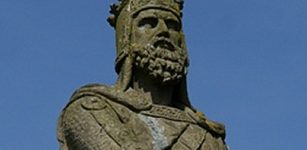 Robert The Bruce: Mighty King Of Scots And Great Scottish Hero
Featured Stories | Oct 13, 2016
Robert The Bruce: Mighty King Of Scots And Great Scottish Hero
Featured Stories | Oct 13, 2016 -
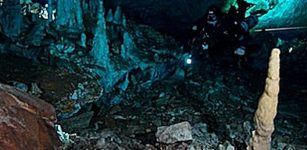 Paleoindian Ochre Mine Found In Submerged Caves In Mexico’s Yucatan Peninsula
Archaeology | Jul 6, 2020
Paleoindian Ochre Mine Found In Submerged Caves In Mexico’s Yucatan Peninsula
Archaeology | Jul 6, 2020 -
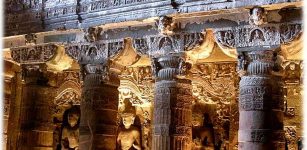 Ajanta Caves: Incredible Accomplishment Of India’s Ancient Stonecutters
Featured Stories | Oct 1, 2015
Ajanta Caves: Incredible Accomplishment Of India’s Ancient Stonecutters
Featured Stories | Oct 1, 2015 -
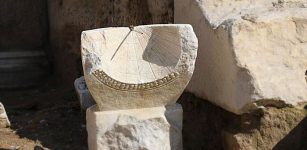 2,000-Year-Old Sundial Discovered In Ancient City Of Laodicea, Turkey
Archaeology | Mar 25, 2020
2,000-Year-Old Sundial Discovered In Ancient City Of Laodicea, Turkey
Archaeology | Mar 25, 2020 -
 Adad ‘Lord Of Abundance’- Mesopotamian Weather God Who Was Responsible For Fertility, Wealth And Oracles
Featured Stories | Mar 11, 2020
Adad ‘Lord Of Abundance’- Mesopotamian Weather God Who Was Responsible For Fertility, Wealth And Oracles
Featured Stories | Mar 11, 2020 -
 Silver Needle Dismissed As Trash Was Part Of A Stunning Viking Treasure Found By Farmer On Gotland
Archaeology | Nov 17, 2020
Silver Needle Dismissed As Trash Was Part Of A Stunning Viking Treasure Found By Farmer On Gotland
Archaeology | Nov 17, 2020 -
 Undeciphered Ancient Symbols On Boulders In Pennsylvania And New England Could Be An Ancient Diary Of Forgotten Civilizations And Events
Featured Stories | Jul 4, 2024
Undeciphered Ancient Symbols On Boulders In Pennsylvania And New England Could Be An Ancient Diary Of Forgotten Civilizations And Events
Featured Stories | Jul 4, 2024 -
 Ancient Recycling Technology Modern World Still Hasn’t Invented
Ancient Mysteries | May 5, 2018
Ancient Recycling Technology Modern World Still Hasn’t Invented
Ancient Mysteries | May 5, 2018 -
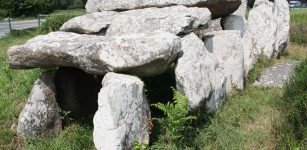 Mysterious Megalithic Stones Of Carnac, France – An Unsolved Neolithic Enigma
Civilizations | Oct 12, 2018
Mysterious Megalithic Stones Of Carnac, France – An Unsolved Neolithic Enigma
Civilizations | Oct 12, 2018 -
 Controversial Sand Mounds In Australia Are 6,000 Years Old Man-Made Burial Mounds – Radar Scans Reveal
Archaeology | Feb 10, 2018
Controversial Sand Mounds In Australia Are 6,000 Years Old Man-Made Burial Mounds – Radar Scans Reveal
Archaeology | Feb 10, 2018 -
 Mysterious Ancient Inscription With Unknown Language Found Near Lake Bashplemi, Georgia
Linguistic Discoveries | Dec 4, 2024
Mysterious Ancient Inscription With Unknown Language Found Near Lake Bashplemi, Georgia
Linguistic Discoveries | Dec 4, 2024 -
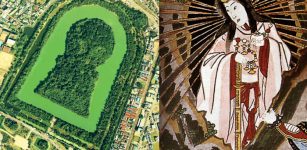 Mysterious Kofun – Ancient Japanese Tombs Were Aligned Towards The Rising Sun And Goddess Amaterasu – Satellite Images Reveal
Archaeology | Jan 20, 2022
Mysterious Kofun – Ancient Japanese Tombs Were Aligned Towards The Rising Sun And Goddess Amaterasu – Satellite Images Reveal
Archaeology | Jan 20, 2022 -
 The Maya Produced Rubber 3,000 Years Before Goodyear
Ancient History Facts | Mar 12, 2016
The Maya Produced Rubber 3,000 Years Before Goodyear
Ancient History Facts | Mar 12, 2016 -
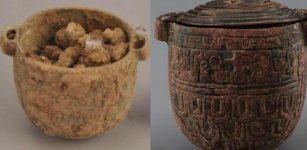 2,700-Year-Old Face Cream For Men Found In Chinese Tomb
Archaeology | Feb 10, 2021
2,700-Year-Old Face Cream For Men Found In Chinese Tomb
Archaeology | Feb 10, 2021 -
 Baffling Unexplained Encounters With Tiny Mysterious Creatures Feeding On Energy
Featured Stories | Feb 20, 2025
Baffling Unexplained Encounters With Tiny Mysterious Creatures Feeding On Energy
Featured Stories | Feb 20, 2025 -
 First Time A Meteorite Killed A Person In Known History Revealed In Old Documents
Archaeology | Apr 29, 2020
First Time A Meteorite Killed A Person In Known History Revealed In Old Documents
Archaeology | Apr 29, 2020 -
 Mystery Of The Tower Of Babel – The Mountain Of God Or A Symbol Of Chaos And Ignorance?
Ancient Mysteries | Oct 14, 2014
Mystery Of The Tower Of Babel – The Mountain Of God Or A Symbol Of Chaos And Ignorance?
Ancient Mysteries | Oct 14, 2014 -
 Mysterious Black Cloud Caused A Global Catastrophe In 536 A.D. And 18 Months Of Darkness
Featured Stories | May 25, 2021
Mysterious Black Cloud Caused A Global Catastrophe In 536 A.D. And 18 Months Of Darkness
Featured Stories | May 25, 2021
